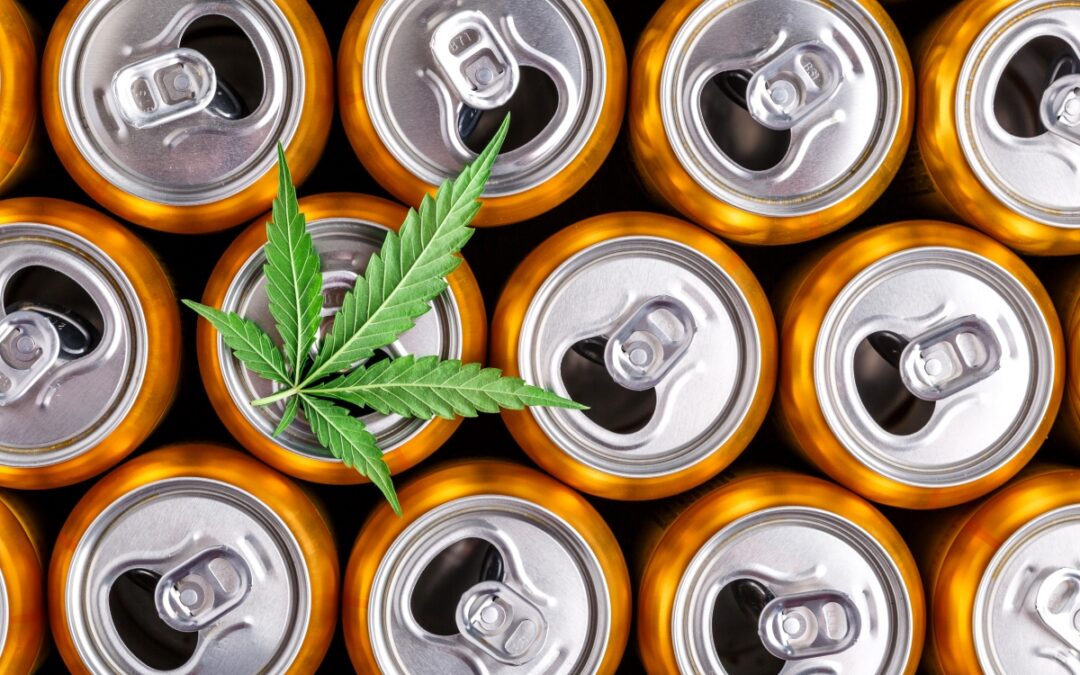From smoking joints to eating gummies, there are many ways people can take cannabis. However, even diehard tokers probably aren’t familiar with drinking their weed.
The very idea of sipping a cannabis-infused juice may make a few people nauseous. However, cannabis drinks are real and they have become quite trendy in the alternative health & wellness industry. While not every cannabis drink will get you “high,” there are a few interesting use cases for these green juices.
What Are Cannabis Drinks?
Cannabis drinks are exactly what they sound like: liquid products with traces of marijuana extract. There are countless varieties of bottled or canned cannabis drinks, but a few of the most popular items include waters, seltzers, and juices. There are also powdered cannabinoids that people could pour into their water bottles. While not as common, some companies now offer specialty cannabis drinks like tea bags and coffees.
The term “cannabis drinks” could also refer to juices or smoothies made with cannabis leaves or buds. Similar to juicing greens like kale or spinach, some people wash their cannabis and put it into a juicer or a blender.
Notably, the cannabinoids in these “raw” cannabis juices are in their non-activated “acidic” state. For instance, these juices will contain THC-A rather than THC. Acidic cannabinoids aren’t as bioavailable as their activated counterparts. While THC-A may have some therapeutic properties, it will not make users “high” like an activated THC product. By contrast, some pre-packaged cannabis drinks have activated forms of cannabinoids like THC and CBD. Customers must review the third-party lab results associated with their products to fully understand what’s in their drinks.
Why Should People Start Using Cannabis Drinks?
At this point, there’s not enough evidence to suggest cannabis drinks are any better or worse than other marijuana extracts. In fact, since cannabinoids are naturally hydrophilic, some argue that cannabis drinks won’t have a massive impact on the endocannabinoid system (ECS). Compounds like THC and CBD are fat-soluble, which means they have naturally poor absorption in water.
To address this issue, many manufacturers are using advances in nanotechnology to shrink the size of cannabinoids. These “nano-cannabinoids” may have greater water solubility than standard cannabis extracts. While the field of water-soluble cannabinoids is new, a few companies and researchers claim it’s possible to produce CBD or THC-enriched drinks with high absorption levels.
Lastly, those who juice cannabis flowers aren’t primarily interested in how cannabinoids make them feel. Since the cannabinoids in these drinks are acidic, they won’t produce significant physiological changes. However, cannabis juicers believe the mix of raw chemicals like terpenes, antioxidants, and chlorophyll could have health-promoting qualities.
At this stage, customers should consider cannabis drinks to be an experimental product category. Customers shouldn’t expect the same intense reactions as edibles, tinctures, or joints when buying a bottle of cannabis water. In most cases, cannabis drinks are best suited for customers interested in microdosing cannabinoids and improving their hydration.

